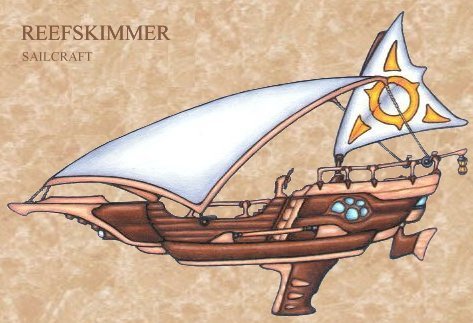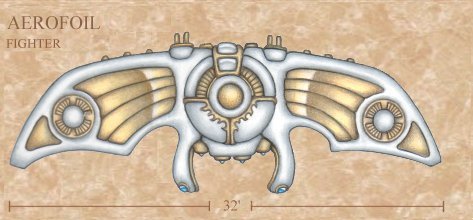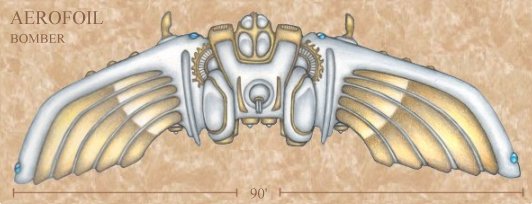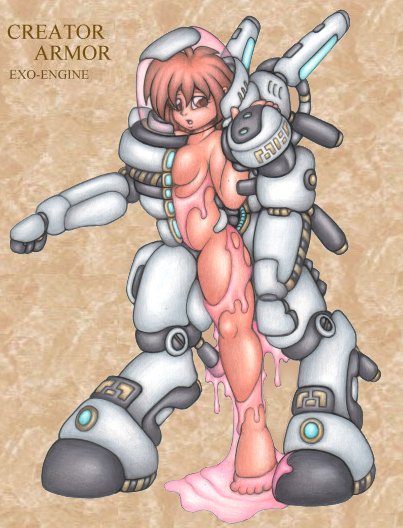
 WEAPONS
ITEMS
SUBSTANCES
CURRENCIES
HOME
WEAPONS
ITEMS
SUBSTANCES
CURRENCIES
HOME

The sleek-hulled reefskimmer is a testamony to the lutrai's creativity. It is a racing and pleasure craft, rarely over fifty feet long, with dual outrigger mounts, a mastless sail, and a composite steering system combining both a rudder and a sail fin. As much as they lack in other areas of advancement, as boat builders they are unsurpassed. The reefskimmer can reach speeds of up to forty miles an hour in good winds, with unheard of maneuverability and resiliant seaworthiness (80%). At top speed, the ship actually lifts up on its three keels, much like a hydrofoil.
The reefskimmer is named for its shallow bottom, ideal for cruising the reef-strewn shallows around Cekus. The boat can carry up to six comfortably, with a small cargo area for food and supplies. Belowdecks, there is typically a single cozy (10x8x5) room towards the back of the ship, lined with pillows and other comforts. These rooms most often have scenic windows of shaped crystal or glass liberated from the many shipwrecks that line the Coral Maze.
A certain amount of magic is required in the creation of such ships. The wood is light, thin, and varnished with a substance called 'Slipwax' (see items), providing frictionless glide in the water, as well as sealing the wood against decay. To create the aquadynamic body, druidic magic is used to sculpt the wood into the many seemingly impossible joinings and sweeping curves. Lastly, a shaman will frequently apply a special rune to the main sail. This Wind Rune is a sort of elemental flag, a symbol of offering that protects the ship againt storms and coaxes greater speed from the sail. Lastly, instead of using conventional lanterns for lighting, both the exterior beacons and the soft interior illumination is provided by spaced gemstones (typically amber or amathyst) enchanted with a magical glow.

The lutraic dolphin is a remarkable unification of magics in boat design, a ship which sails circles around even the fastest vessels built by non-aquatic races. The dolphin makes use of mastless sail woven with elemental wind wards, glyphs which make it more like a flying carpet than anything else. The pontoons and single-seat hull are all composed of a light, highly-durable wood, which is coated in a hard, waxy resin to reduce water resistance and protect against decay. Joining the sail and hull is a complex rigging which allows the agile craft to be steered by both leaning and pulling the sail's orientation left or right by means of side-mounted handles. The ship is so light that it actually leaps off of waves and can sail for hundreds of feet before splashing down again. Skilled boaters can reach speeds of nearly sixty miles an hour riding a storm front, though the craft's general cruising speed is about half that. These boats are generally used as racing and pleasure craft, and are very popular among the lutrai youth.
Dolphins have also been adapted for use by the Chainbreakers in rescue and infiltration maneuvers. Painted black, these ultra-fast outriggers can outrun any ship in the Tamaran navy. Cruising across the deadly waters of the Deep, groups of these ships will slip through the blockades around the island kingdom in order to retrieve lutrai slaves, burn shipyards, or sabotage the ships themselves. The Tamarans have only the cepn to intercept these infiltrators, and even the cepn have difficulty diving down upon the fast-moving craft and its bubble of magically-sculpted air.
I had to think of at least one thing the lutrai were really good at, and so I decided on boats. It's harmless enough considering that the magnificent boats they build have no weaponry or military application. For the lutrai, building a reefskimmer is a team effort, as is crewing it once it's built. Frequently, this boat culture forms very strong friendships, through fishing, exploring, or racing. Every year, the lutrai have a big race along the archipelago, in which each tribe selects their best sailing teams to compete.

When they can actually be persuaded to move, the hedonistic gorgs insist on traveling in style. Their enormous wagons are designed for both the ultimate in comfort and security, a garrish cross between a tank and a luxury inn suite. The rolling fortresses average six-hundred square feet, heavily protected and capable of crushing an armored phalanx without so much as slowing down. The interior is a sharp contrast, the very lap of decadence, all geared towards the owner's comfort throughout the entirety of even the shortest voyage. Some merchants will even take a portion of their business with them on the road, stocking their wagons with exotic goods, slaves, and food of all kinds. The wagons are often fully-enclosed and able to resist even the fiercest weather. Light, heat, and cooling are all provided by Arcanar appliances.
Even the most cunning brigands are hesitant to attack gorgish caravans. The huge wagons are equipped with numerous defenses to ward off attack. Most are designed to repel large groups of average-sized creatures, though the metal skin and immense weight give them excellent protection from even large adversaries. Some of the more common defenses include crossbow slits, vents that emit deadly gas, and nozzles from which burning oil can be pumped. One clever guildmaster even designed wheels that contained immense hornet nests, which could be opened in order to surround the sealed wagon in a furious, stinging miasma. In any event, the defenses are well-waranted. Gorgs are known to carry large quantities of wealth - tempting targets in any circumstance. Security is a must.
Many recent designs, like the one shown here, are designed to be linked together, forming long trains. In order to pull their immense weight, great beasts of burden are required, along with teams of drivers (typically slaves) and guards (typically mercenaries). These caravans can be seen from miles away, often by the immense clouds of dust they produce, or the bright lamps meant to draw curious parties when goods are for sale. Straight, even roads are often necessary for such wagon-trains, though there are certain models capable of limited offroad travel. This is typically accomplished by crushing absolutely everything in the wagon's path - rocks, trees, slow-moving people, and so forth. Like so many aspects of gorgish culture, they become tied to self-esteem, with rivals constantly trying to outdo each other in size and splendor, boasting of each and every feature to anyone willing (or not) to listen.

This is the term given to a broad range of light recreational and commercial craft. These versatile vehicles could traverse nearly any terrain, including water, by means of low-altitude hover fans, though special hyper bridges, or 'spans', were created specifically for their high speed capabilities. Reaching speeds of roughly two hundred miles per hour, spanners afford the ultimate smoothe ride, requiring a low, sleek design and aelerons in order to cut wind resistance. Most spanners are (or were) environmentally sealed, with their own air-recyclers and environmental controls, allowing them to operate in any weather, hot or cold. Their hydrogen fusion engines are powered by ordinary water and a complex catalytic system. Like many of the lighter contructions of the ancient age, spanner hulls are made of Z1, allowing them to heal minor damage and ignore the effects of aging. All materials vulnerable to corrosion are either coated in gold, or sealed by inert argon gas. They thrum softly when active, a sound akin to the purr of a very large feline.

The aerofoil is a wonder of ancient times, a vessel capable of flight. Like the larger bomber, the low-flying fighter class was engineered by the City Mind to combat its airborn foes. These included dragons, griffins, and all manner of angelic and demonic beasts send by the gods throughout the course of the Twilight War. In air-to-air combat, this flying machine outperformed them all. With their high-speed vertical take-off fans and light, agile airframes, the various fighter types could be deployed rapidly in combat, and reach nearly any target area in minutes. Armed with a variety of air-to-air weapons, these craft were also responsible for defending larger aerofoils such as bombers and transports. Their powerful hydrogen engines could push them up to speeds in excess of mach one, though a typical engagement velocity was closer to three hundred miles per hour. Alternatively, the aerofoil could engage slow-moving ground targets by hovering on its fans.
As with most Creator designs, white and gold were the primary colors of choice. These reflective coatings made them easy to spot from a distance, but also disguised the actualy size of the craft, making it difficult for enemies to spot details until they were engaged. These deadly craft could fly circles around dragons and other large, winged beasts, and waves upon waves eventually battered down the formidable armies sent forth by the gods. In the final years of the war, most of these craft became fully-automated drone escorts for the dreaded Nigh.
As with the bomber, or any Creator vehicle, for that matter, the aircraft's controls are quite complex and alien. Steering is relatively simple - taking off and landing can prove disastrous, especially if malfunctions are present. Despite their near-ageless contruction, not all components are garanteed to have survived three thousand years in some dusty hangar buried beneath the shifting sands of Axis.

The bomber's outer skin is highly reflective, its wings in particular. While this may seem a little extravagant for a war machine, the coloration does have a purpose. Any enemies wishing to persue one of these aircraft often has to contend with blinding glare. The polished golden foils along the wings could easily be manipulated by a skilled pilot to maintain this blinding effect, while the tail-gunner would take full advantage. The underside of the aircraft is plain, non-reflective white material, making it quite difficult to spot among even light cloud cover. Without the need for a runway, these vehicles could be launched from almost anywhere, and were extremely effective in heading off ground-based invasions.
Operating one of these devices is no small feat. Though simplified, the cockpit still contains dozens of instruments and readouts, all presented at speeds that boggle even the fastest and most attentive observers. Only one pilot is required, though additional crew to operate the tail gun and bomb doors are certainly helpful. Computer support also exists, though in a language that has been dead for three thousand years. Some Machines are capable of piloting these devices with little difficulty, as they are able to speak with the support computer directly. These ancient vehicles are usually found in pieces, overgrown with centuries of moss and vines.

Numerous styles of Machine armor were built during the early stages of the Twilight War. These ranged from bulky black and yellow contruction units, to graceful flying suits and fighting engines, all meant to upgrade the capabilities of wearer in some, if not most respects. These suits were eventually replaced by independant Machines, allowing the Creators to wage war from a far safer distance. Still, a number of them exist to this day, though they are by far the least common of Creator hardware. Only four are known to exist in working order, one of which is owned by the Decider herself.
The suit at left, for instance, is a deep-sea vehicle called 'Fathom'. It surrounds its wearer in a warm, breatheable fluid bath which protects her from the crushing pressures experienced at great depths. The liquid is a polymorphic and vaguely-sentient extension of the onboard systems, an organism called a 'biote', which feeds off of the suit's internal energy. It provides warmth, mild nourishment, and oxygen for the wearer, in turn absorbing waste, dioxins, and contaminents generated by the body. Sharing a closed space with living goo still takes a little getting used to, however, especially when it floods the interior unexpectedly and smothers an unsuspected user. More basic than later designs, including most Machines, these suits are easier to use than the average Creator vehicle, but one's success is never assured. Once immersed, the pilot guides the Fathom by simply moving within it, or activating its array of high-pressure thrust nozzles. These jets allow the suit to move quite gracefully underwater - the Fathom is bulky and ungainly on land. It also lacks any form of onboard weaponry.
Though their functions vary greatly, exo-engines do share a few commons traits. They protect the wearer far more thoroughly than any suit of conventional armor, often completely sealing them off from the outside world. This protection includes air filtration and environmental controls to fend off heat and cold. They almost always increase the wearer's strength, while lowering agility, and can often be equipped with Machine task modules. Most will also possess a sort of rudimentary intelligence, about equal to that of an elemental or well-trained mount, and can operate on their own in some capacity. Exo-engines are almost always sized for Creators, though an internal biote can be configured to mold itself around smaller wearer in order to provide the necessary additional padding. Finally, in order to create bio-feedback with the armor's internal systems, it must be worn naked.